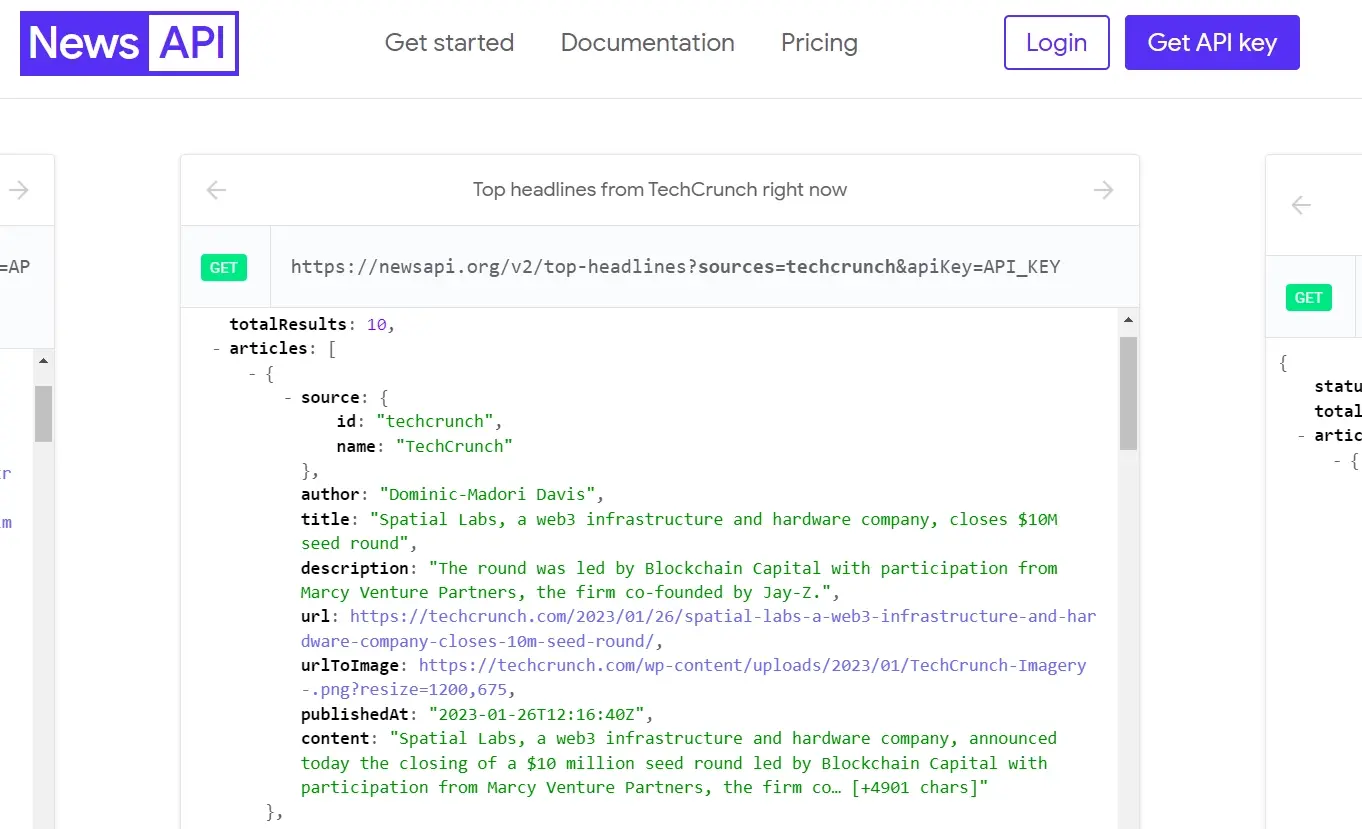There is a process that the software must go through in order to communicate with other software; We’ll refer to this process as an "aid" because it makes communication much easier to access.
Think of this tool as a middleman, similar to how a bank app mediates transactions between a seller and a customer. For example, the bank app enables you to conduct transactions without being aware of the application's complexity; how the funds are transferred from your account to the merchant's account is irrelevant to you, and the success or failure of the transaction is the only thing that matters. So, what kind of aid are we talking about?
The application programming interface is what we're talking about. Without an Application Programming Interface [API], applications would be incomplete. This article aims to define application programming interfaces (API), discuss their use in web development, and explain what an application is used for and why it is important.
What is an API?
APIs are a way for two or more computer programs to communicate with one another.
To put it another way, APIs enable communication and information sharing between various apps and services. The obvious reason for almost every app having an API is to transfer data, but there are many other good reasons as well.
Many programs include an API that serves as a bridge between the provider program and the consumer program. Consumers don't need to have access to the source code to use all the features. The weather app on your phone serves as a common illustration. There are various types of weather apps for various applications. How do they obtain weather predictions? Gathering weather data is a complex process that involves using tools like satellites, radar, weather stations with temperature sensors, etc.
You can already tell that it would take a lot of money and effort to set this up, so anyone cannot do it. As a result, there is a demand for weather companies that provide APIs for integration with other applications; one such company is AcuuWeather, an American company that provides weather forecasting services. Additionally, APIs make it possible to sign into other websites using your Facebook or Gmail account without setting up a unique username or password.

The majority of the time when the term "API" is used, it is in relation to web technologies because APIs typically point to the web. In the image above, we have a News API where you can select different endpoints (the URL). This API allows you to retrieve information regarding the latest news across various sectors. An API key is necessary when sending an API request to an API server. An individual ID called the API key is used to track who is using the application. You'll see that the key isn't shown in the image above because a login hasn't yet taken place.
Once you register to use the API, an API key will be assigned to the application you're connecting with. APIs carry out extended functionality in addition to information exchange between software. As an illustration, APIs can be used to schedule automatic posts on social media platforms and can be used to integrate two systems, such as inventory management and an e-commerce platform, and IOT devices with other systems, such as your light switch with the Google Home app.
Benefits of APIs
There are many advantages to using APIs, but to name a few, they include the following:
Association: The benefit of API is the association of applications, what does this mean? This implies that developers don't need to be aware of the intricate background work in order to rely on the capabilities of other applications or outsource specific functionalities that aren't available on their apps from other applications.
Efficiency: APIs are light and easy to use, they make development faster and more efficient. APIs greatly shorten the development process, allowing developers to concentrate on other areas of the project without having to worry about creating an API from scratch.
Customization: APIs allow customization and developers are able to build applications to their specific users' needs.
Integration: Companies with their APIs accessible for integration with other applications include Amazon, YouTube, Twitter, etc. For instance, the Amazon API can give you access to the company's marketing and advertising tools, which can help you monetize your application and generate revenue when you advertise Amazon goods.
Scalability: APIs can help businesses scale processes by addition of external features and functionality lacking in their system. They can easily incorporate third-party platforms to expand their clientele and, consequently, increase their revenue.
Types of APIs
There are various API types based on their accessibility and usage;
Internal APIs: Internal APIs are used within an enterprise or an organization. It’s designed for internal systems and team members i.e. Marketing teams, Sales teams, HR, etc.
Open APIs: It is known as Public or External APIs. Anyone can access data or services using these APIs. Some, however, might demand that you register before receiving the API key. Similar to the aforementioned News API example, depending on how frequently you call the API, you can subscribe.
Composite APIs: To obtain data from numerous applications or sources, composite APIs are used. Multiple endpoints can be accessed by developers in a single call. Combining multiple APIs into one reduces complexity and speeds up calls.
Partner APIs: Partner APIs are not available to the public, they are similar to internal APIs. They are only available to business partners and require specific permissions to access them. e.g. payment gateway APIs, courier services APIs, etc.
API STANDARDS
These are the standard formats through which APIs communicate with each other; the formats for API standards include:
SOAP (Simple Objects Access Protocol): SOAP is a protocol for exchanging data in the implementation of web services and computer networks. It is used for complex transactions, and it delivers a standardized method for encoding and transmitting messages over the Internet.
GraphQL: A runtime for APIs, GraphQL is a query language for creating client applications. It was created to address the query restrictions of the Rest API and is used for querying and improving data.
REST (Representational State Transfer) API: A Rest API is a set of architectural constraints used for developing web services, also known as a set of rules for building web API. An API built following the REST standard is referred to as a "RESTful API." Examples are; Twilio, Google Maps etc.
gRPC (Remote Procedure Call): gRPC is a remote, open-source RPC framework used to build APIs. It’s a rewrite of the RPC infrastructure, which is regarded as one of the earliest and simplest forms of API. It is a protocol for communication that is now used as the preferred RPC mechanism to link micro services that are operating both inside and outside of data centers, for example, Netflix, Slack, etc.
When working with an API there are several things you should be aware of:
Documentation: The documentation for APIs is essential for understanding the policies and procedures. You can learn more about how to use the API, the cap, and all of the features that are offered in the documentation.
Data Formats: Becoming familiar with the data format returned by an API is necessary, the format can either be in JSON or XML. You’ll be able to parse your code based on this information.
End-Points: The various endpoints available in the API allows retrieval of data with ease, therefore, you must understand the endpoints.
Parameter: Parameters affect the type of action you want to take on a resource, you can pass these parameters to the endpoint to determine the outcome you want. I.e. URL path, query parameters, headers, etc.
Authentication: APIs require authentication to be able to access data, the authentication prevents cyber-attacks. There are several authentication methods like API key authentication, Oauth technique, etc. Choosing the best method of authentication also determines the level of security.
Error Handling: There may be errors that occur on either the client or server. It’s imperative to take into account this possibility and follow the best error practices.
Security: APIs need to be protected from attacks, therefore security measures must be put in place to prevent that from happening.
Updates: APIs are often updated, it’s necessary to keep to date on changes to ensure your code is accordant with recent versions.
Conclusion
APIs are primarily concerned with communication, either between services or between applications. It's safe to say that almost all applications and websites make use of APIs. APIs aren't always used for serious purposes; they can be humorous, like the Pokemon GO API, which provides detailed information about the Pokemon video game series, or practical, like APIs for checking recipes, etc. The list is never-ending. Building an API for your application or utilizing an existing API for your application involves a lot of work. The good news is that before creating an API or using one that has already been created, you can read the documentation that is available.
Frequently Asked Questions
Can I easily integrate third-party tools and APIs with Verpex Web Development Hosting?
Yes, Verpex Web Development Hosting allows for easy integration of third-party tools and APIs, enabling you to streamline your workflow and enhance your project's functionality.
How quickly can I deploy an application using SaaS hosting?
Applications can be quickly deployed using SaaS hosting, which usually takes just a few minutes.
Are SaaS hosted applications compatible with any web browsers?
Yes, SaaS-hosted applications are usually compatible with all major web browsers, such as Chrome, Firefox, Safari, and Edge.
Can I easily integrate third-party applications with Verpex CRM hosting?
Absolutely! Verpex CRM hosting supports easy integration with various third-party applications and tools essential for your business operations. Our hosting environment is designed to facilitate seamless connectivity between your CRM and other software solutions, allowing you to streamline your workflows and enhance productivity.

Jessica Agorye is a developer based in Lagos, Nigeria. A witty creative with a love for life, she is dedicated to sharing insights and inspiring others through her writing. With over 5 years of writing experience, she believes that content is king.
View all posts by Jessica Agorye



















